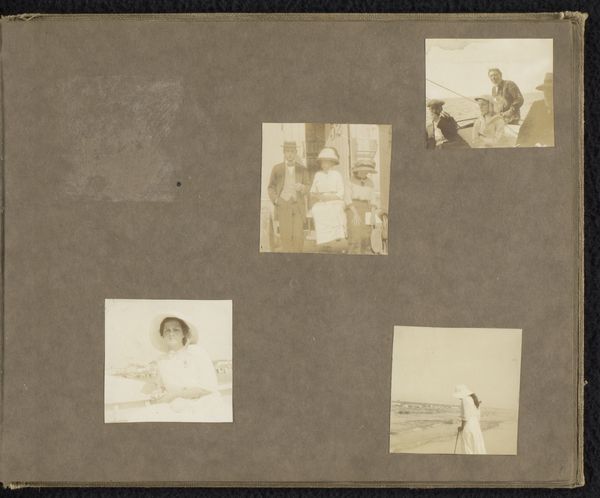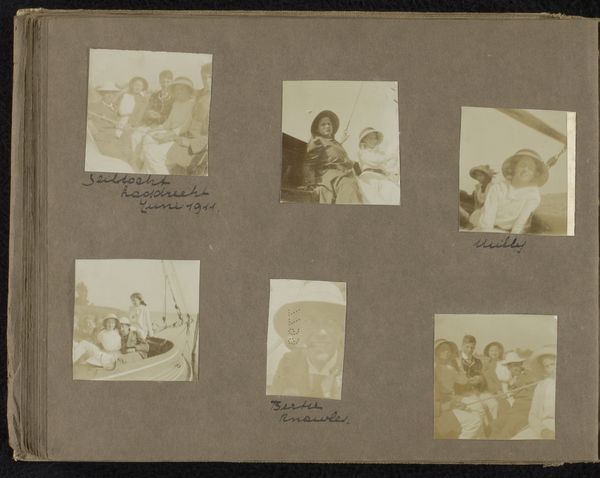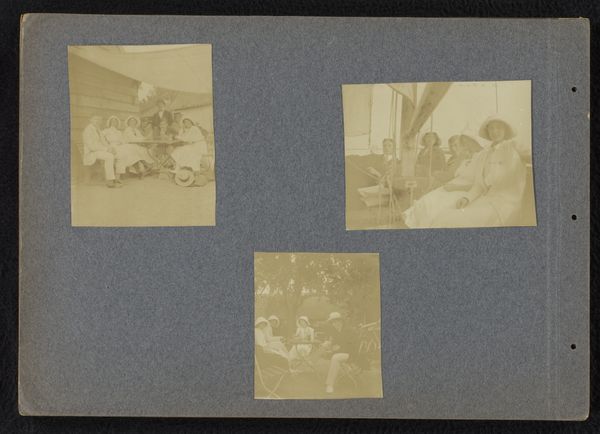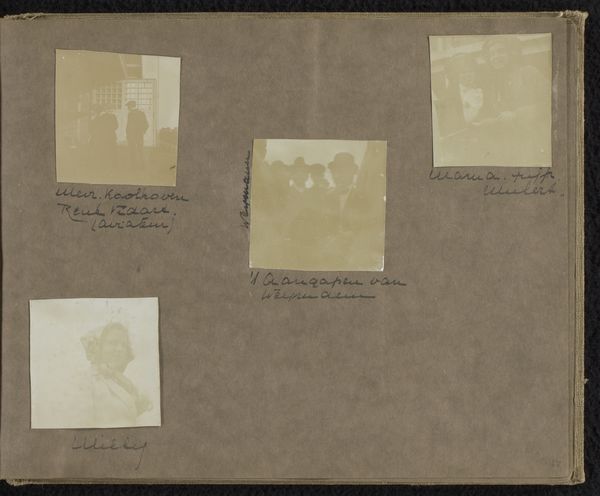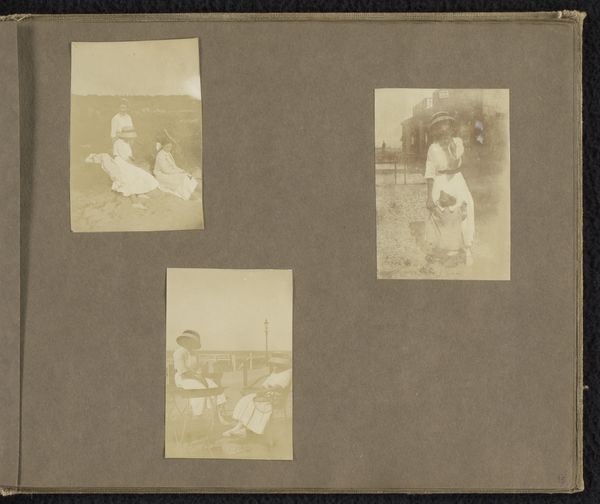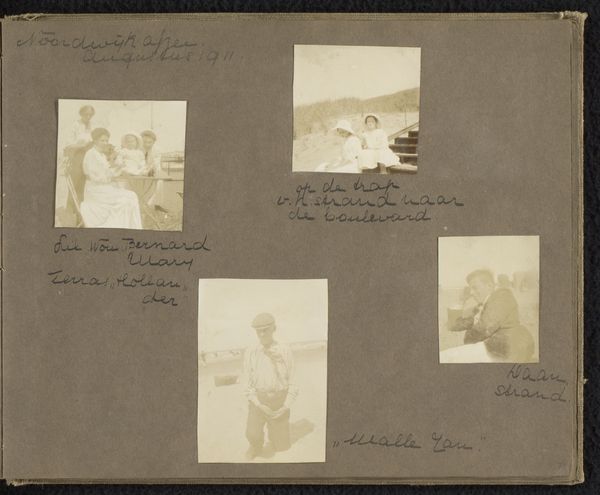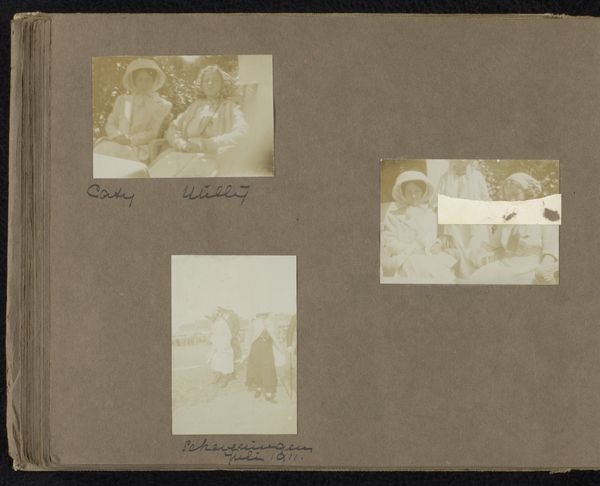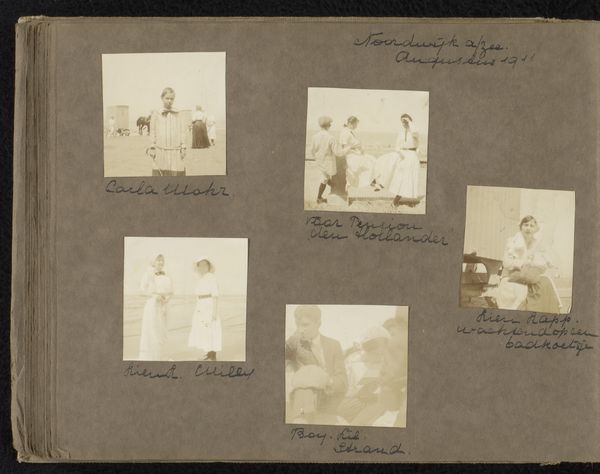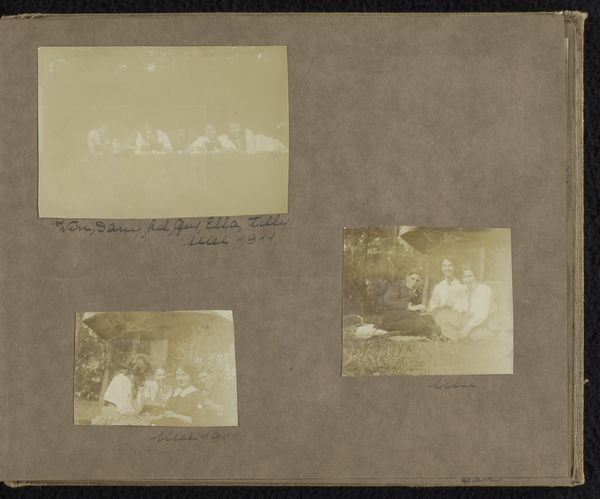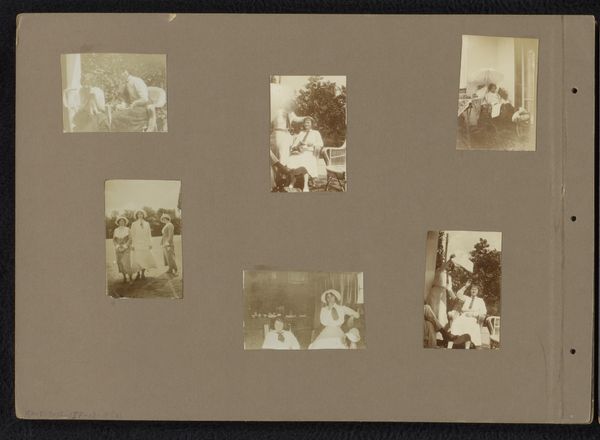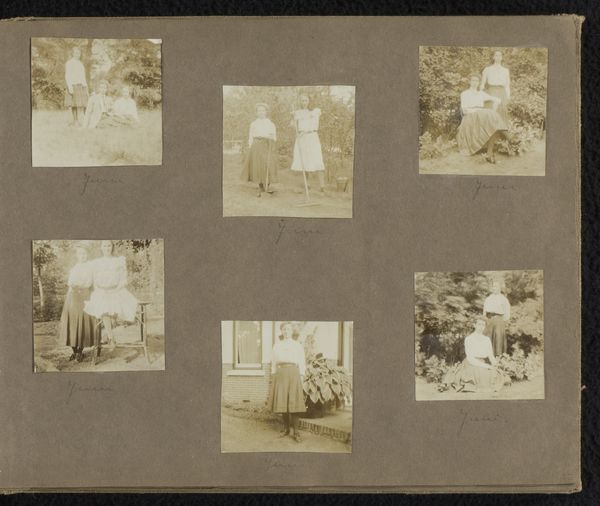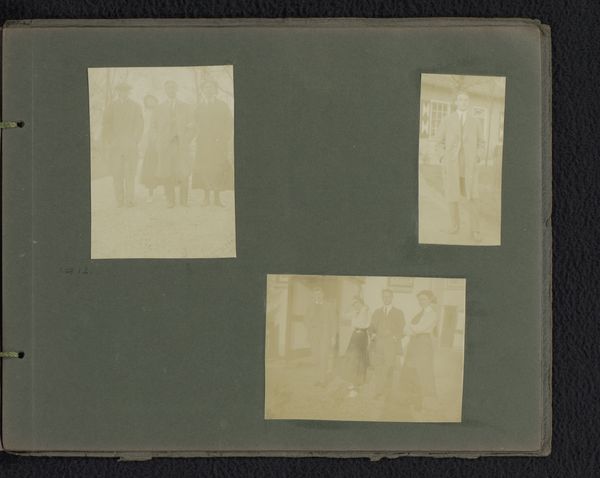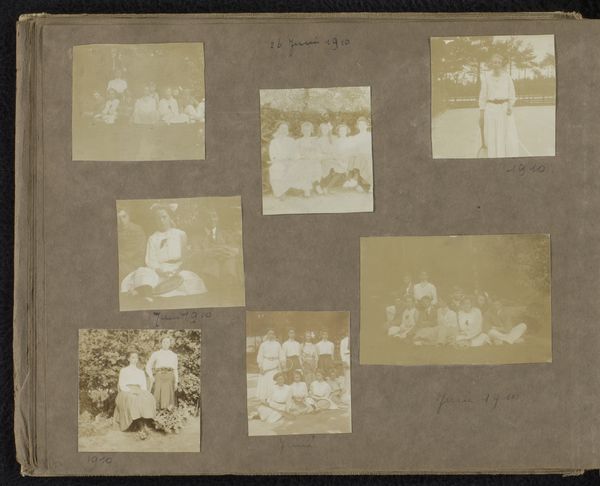
photography, albumen-print
#
portrait
#
pictorialism
#
landscape
#
photography
#
albumen-print
Dimensions: height 203 mm, width 253 mm
Copyright: Rijks Museum: Open Domain
Curator: We are looking at “Drie foto’s van een vakantie in Noordwijk,” or "Three Photos from a Holiday in Noordwijk," a photographic work dating from between 1911 and 1918, created by Carolina (Loentje) Frederika Onnen. These albumen prints are presented within the context of a photo album page. Editor: It's quite evocative. The sepia tones lend it an air of wistful nostalgia. There is a faded quality about them—a delicate tenderness to each vignette, as though recalling memories just out of reach. Curator: Absolutely. Onnen’s pictorialist style really shines through. Pictorialism, as a movement, often sought to elevate photography to the status of art through soft focus and painterly effects. Given her positioning as a female photographer during this era, her manipulation of imagery would be aligned to push against purely objective recordings, something still dictated by male dominance in photography at this time. Editor: I’m especially drawn to the hats. The girl’s straw hats in the two lower images evoke ideas about innocence and youthful summers. But also sun protection, which became highly fashionable at the time! What can we glean about her identity from these visual markers? Curator: Indeed. It places the subject and setting in a certain class context – those able to afford leisure time and to perform roles of relaxation. And, notably, within a highly regulated system of representation linked to the rise of commercial photography, consumerism, and the very staging of identity. Northwijk as a fashionable bathing destination would further this reading of exclusivity and belonging. Editor: And there's the blot in the lower left. Almost an accidental mark… or could this suggest the presence of an imposed flaw, interrupting our viewing? What if that’s where another figure once existed? Curator: That disruption actually underlines a critical idea, too—the incomplete narratives, the parts missing, that form any historical archive. Who and what has been erased? Editor: That accidental tear carries so much history. What at first appears like simple family portraits, actually reveals complicated readings about consumerism and the fashioning of identity at a particular cultural moment. Curator: A powerful lens onto the intersection of photography, identity and society in early twentieth-century Netherlands.
Comments
No comments
Be the first to comment and join the conversation on the ultimate creative platform.
